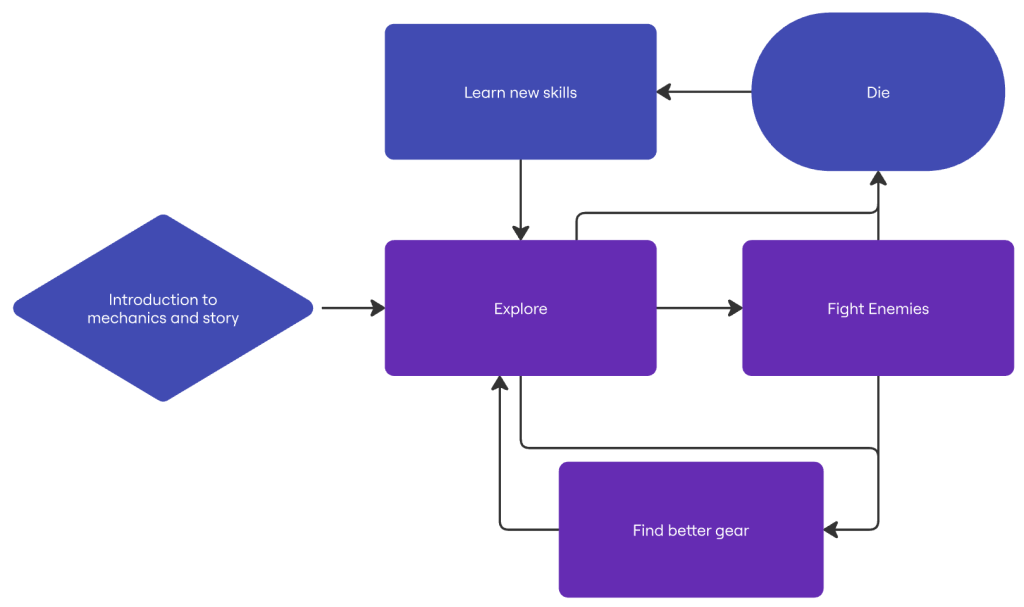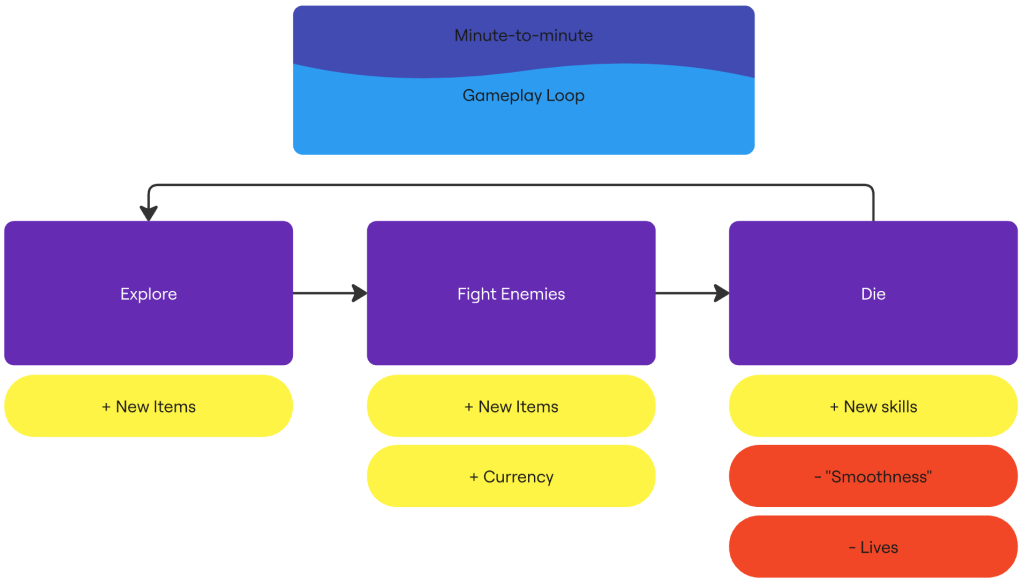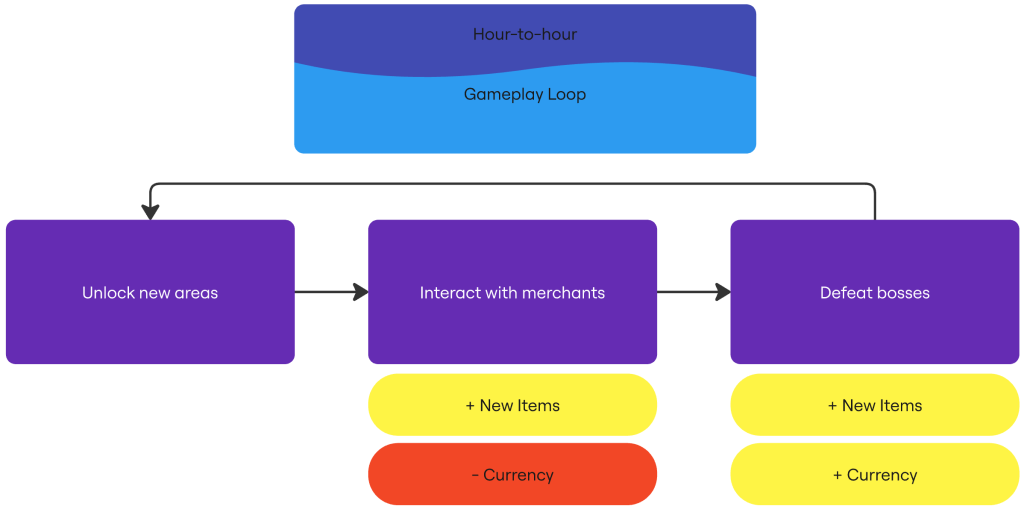This week we had another Guest Speaker, which by far I feel was the most important guest to come and lecture us so far. Venezia.G is a Senior Systems Designer at Sumo Digital and has worked on games played by hundreds of millions of players.


Here, Venezia tasked us with creating a simple, overall game loop for our own games:

After being introduced to different types of game loops, I began to create more specific game loops – specifically loops-by-time, an extremely important part of these game loops is providing the resource flow, which is very easily overlooked when it comes to creating game loops:




“As ____” Portrays who the game is made for/catered towards. Essentially, who is the target audience of the game?
“I want ____” Put yourself in the shoes of the player. When experiencing the game, what do they desire to either help them or make their experience a better one?
“so that ____” Justify their wants so that they become needs. What makes it a necessity?

Review
Creating an fun and intuitive game loop is how game designers and developers keep players playing your game – which is the goal behind creating any game (What’s the point of making a game if no one wants to play it?).
My game’s game loop must be digestible enough to be enjoyed by any one but interesting enough for it not to be extremely repetitive and easily bore the player.